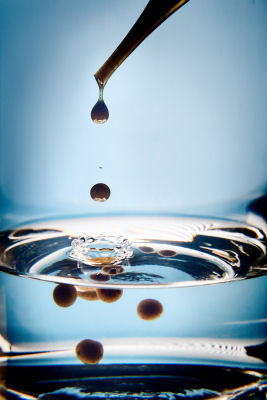|
Strona archiwalna!
Ta strona zawiera treści archiwalne, które nie były zmieniane po 23 września 2019 r. Jeśli chcesz wiedzieć więcej zapoznaj się z deklaracją dostępności
|
||||||
archiwum
 2006 2006
 2008 2008
 2010 2010
 2012 2012
 2014 2014 |
||||||

| ||||||
 |
 |
|||||

|
||||||
| strona główna założenia regulamin kalendarium wskazówki pobierz jury rejestracja zgłoszone projekty galeria gallery | archiwum kontakt | |||||
Description popularizing the research project Each wastewater is different. There is household wastewater, rich in detergents and products of human metabolism. There are also medicines in them, including hormonal ones. There is agricultural wastewater. It contains everything which is washed from fields where farming is uses chemicals i.e. fertilisers and pesticides, together with products of metabolism of farm animals. Yet the most diversified group is industrial wastewater. Here you will find the full spectrum of chemical waste, which broken into elements would leave very few vacancies in the periodic table, from heavy metals to products of petroleum processing. It is easy to imagine the disaster for the environment and human health the concoction would bring, if it got to natural water reservoirs and watercourses providing drinking water. Fortunately, before the wastewater finds its way to rivers it flows to wastewater treatment plants. There, it undergoes processes to keep all the unwanted substances in the plant, as in a sieve, and treated "safe" water flows to rivers and lakes. The danger remains on the "sieve" in form of wastewater sludge. They contain, in highly concentrated form , everything which was in the wastewater: detergents, medicines, pesticides, fertilisers, metals, hydrocarbons and extra bacteria, often pathogenic, common in household and agricultural wastewater. Abstract In view of the new legal provisions (2016) sewage sludge is considered waste that cannot be stored. Therefore, it is extremely important to search for new methods of its utilization. Sewage sludge is characterized by high content of organic matter and minerals, so that it can be used as a material for restoration of degraded areas. However, due to the unwillingness of local communities towards sewage sludge because of its high content of heavy metals and patho-genic microorganisms, the possibility of using them in an unmodified form is virtually impossi-ble. The aim of the study is to find a new method of transforming sewage sludge into a product suitable for industrial applications including an environmental application. Sewage sludge transformation is based on its immobilization in a biopolymer carrier. Biopolymers are easily biodegradable substances, capable of forming three-dimensional networks (hydrogels), which makes them a perfect carrier for immobilization of biological materials. As the preliminary re-search task the influence of several factors such as: the biopolymer concentration, the time reaction and the divalent cations concentration on capsulation effectiveness was determined. The capsulation was performed in laboratory scale. Into a flask, where the cross-linking solu-tion was stored, a mixture of sewage sludge and alginate was added. Sewage sludge capsula-tion takes places in the most effective manner when the biopolymer concentration amounts to 1-2% and the cross-linking solution concentration is 2%. The optimal reaction time is 15-20 minutes. In the forthcoming tasks the mechanical strength of the sewage sludge capsules will be tested and the structure of the capsules will be determined with scanning electron micros-copy. In the last phase of the research the possibilities of industrial and environmental applica-tion of the obtained capsules will be tested.
|


|
|||||


 One drop changes everything - the sewage sludge capsulation
One drop changes everything - the sewage sludge capsulation









